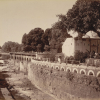Political processes and the idea of kingship have always been central to the understanding of the culture and history of ancient and early medieval India and vice versa. Prof. Hermann Kulke has contributed significantly to this field of study through his work on the processual model of integrative state formation. Here, he talks to Prof. Bhairabi Prasad Sahu, Dr Yaaminey Mubayi, and Meenakshi Vashisth about his intellectual journey of studying kingship ideology and temple architecture in Tamil Nadu and Odisha. He also shares insights from his on-going research on the comparative study of processes of state formation on both sides of the Bay of Bengal—Gajapati kingship of Odisha and the Devaraja kingship of Angkor.
Hermann Kulke is Professor Emeritus of South and Southeast Asian History, Kiel University, Germany. Kulke completed his PhD (Indology) on the temple city of Chidambaram from Freiburg University in 1967, and his DLitt (Habilitation) on Gajapati kingship and the Jagannath cult from Heidelberg University in 1975. After completing his PhD, he taught Indian history for 21 years at the South Asia Institute, Heidelberg University. He was the founder member and coordinator, respectively,of the first two Orissa Research Projects of the German Research Council. He received a Gold Medal from the Asiatic Society, Kolkata, and was presented the Padma Shri Award in 2010 and the Federal Cross of Merit, 1st Class, in 2011.
Prof. Bhairabi Prasad Sahu teaches history at the Department of History, University of Delhi.
Dr Yaaminey Mubayi is a historian and social-development professional with research and field experience in the area of cultural heritage and sustainable development.
Meenakshi Vashisth is a research coordinator at Sahapedia.
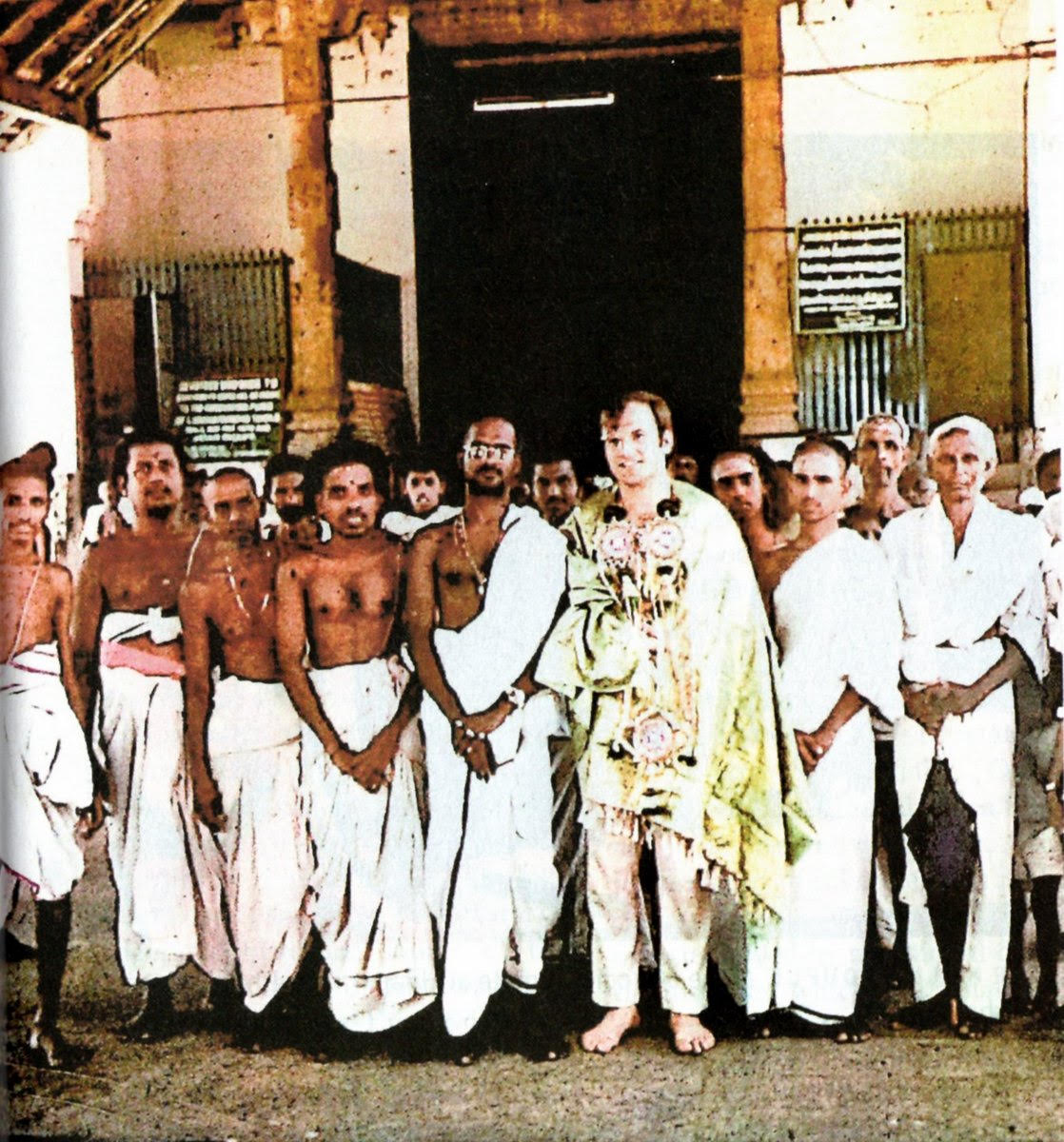
Fig. 1. Hermann Kulke at the Nataraja temple in Chidambaram at a function with the Dikshitars after the presentation of his PhD thesis ”Cidambaramahatmya”, in 1970. (Photo Courtesy: Hermann Kulke)
Dr Mubayi (YM): Prof. Kulke, if you could tell us something about your initial experiences and the motivation that led you to your study of Odisha. Why did you move into Odisha as a region of study, and what interested you?
Prof. Kulke (HK): First of all, let me thank you for providing me with the opportunity to talk about the background and intentions of my studies on Odishan and Southeast Asian history. I studied Indology at Freiburg in Germany and did my PhD on the Cidambaram Mahatmya, a twelfth-century Sanskrit text. It contains legendary and semi-historical accounts of Chidambaram, the temple city of Shiva Nataraja. This text was a kind of initiation for my future studies as it dealt not only with religion and its institutions, like temple cities and their cults, but also with their influence on regional culture and processes of regional state formation. This symbiosis and interplay of religious and political history corresponded with my general predilection for history. But the study of temple cities (tirthas) and places of pilgrimage had not yet become a common field of Indology in Germany. Therefore, some colleagues in the Department of Indology at Freiburg and the South Asia Institute of Heidelberg University approved of my suggestion to apply for a research project on Odisha’s temple cities.
The initial idea was to compare Bhubaneswar and Puri, and the Shaiva and Vaishnava cults of the Lingaraja and Jagannath temples. But after a revealing and successful pilot project at Puri in early 1969 with Dr Gaya Charan Tripathi (now Professor and Director of the B.L. Institute of Indology at Alipur/New Delhi), we finally decided to apply to the German Research Council for a project on the cult of Jagannath. Its study offered several unexpected advantages. A major attraction of Puri is the seemingly contradicting worship of Jagannath as an incarnation of Krishna through a monumental wooden deity (darumurti) with clearly visible indications of tribal origin. The uniqueness of Jagannath’s religious and iconographic idiosyncrasy is aggrandised by the Gajapati kingship ideology. Jagannath is worshipped as the ‘King of the Odisan Empire’ (Odisa-rajya-raja), under whose overlordship (samrajya) Odisha’s maharajas ruled as ‘Gajapatis’ (Lord of Elephants). They were praised as the sons (putra) and deputies (rauta) of Jagannath.
To come back to your question about my motivation to amend and extend my Tamil Nadu studies to Odisha. In my first I.H. Qureshi Memorial Lecture on January 17, 2018, ‘Ritual Policy, Kingship Ideology and Temple Architecture in Tamil Nadu and Odisha’, I emphasized the equivalence of both regions for my studies. Like in Odisha, Chola kingship ideology too was strongly associated with a monumental temple—the Rajarajesvara or Brihadisvara Temple at Thanjavur, constructed by Rajaraja I in the early eleventh century as the largest Hindu temple of that age. In this context, a continuity of my studies would indeed have made sense. After all, Nataraja, Chidambaram’s presiding deity, was Rajaraja’s tutelary deity and istadevata (preferred deity). But, on the other hand, the unique and multifaceted idiosyncrasy of the Jagannath cult and its spread into the feudatory states of the tribal hinterland of Odisha made a study on the cult of Jagannath very promising for a more general study of sub-regional and regional state formation in pre-modern India.
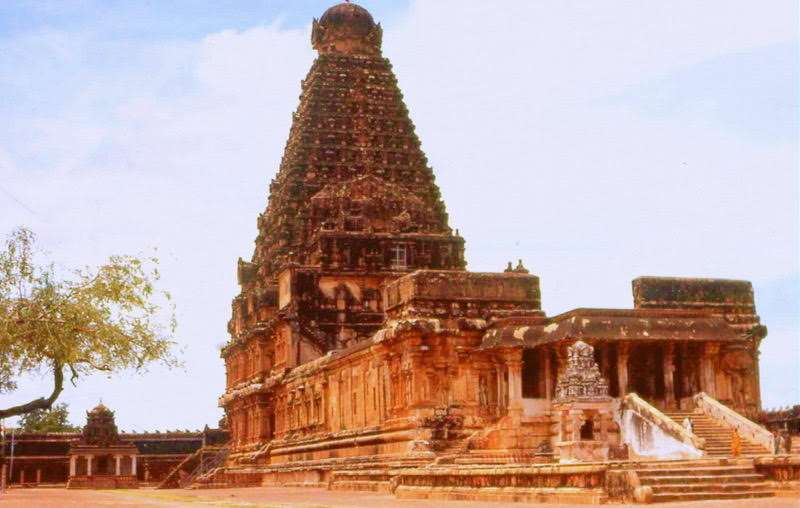
Fig. 2. Tanjavur, the imperial Brihadisvara temple, built by the Chola king Rajaraja in 1010 CE. (Photo Courtesy: Hermann Kulke)
YM: Could you tell us about how you explored the linkages between the Garhjatstates and the core area in Puri, particularly through the medium of the istadevatas and thakuranis (indigenous tribal goddesses)? You have written extensively about this. How did you conceptualise this link?
HK: The interrelation between these tribal thakuranis and the Hindu cult of Jagannath was really one of my main motivations to continue my studies in Odisha. Most of the 24 ex-feudatory states of Odisha had, and still have, Jagannath temples in their small capitals. But as they had mostly come up between the eighteenth and early twentieth centuries, they have been largely neglected by studies on Odisha’s classical art and architecture. These Jagannath temples adorned the courtyards of the feudatory rajas, and their rituals were exclusively dominated by the royal Brahmins. During my extensive travels it was surprising for me, as a student of Indology and the culture of India’s great regional kingdoms, to discover that the kuladevata (the family or dynastic deity) or istadevata of the ‘little kings’ of Odisha was not Jagannath. Instead, their tutelary deities were powerful indigenous tribal goddesses or thakuranis. They were always located outside the Brahmanically controlled surroundings of the court, and were served exclusively by local tribal priests. Even during Durga puja, when the rajas and their rajagurus (royal priest) visited these thakuranis, the tribal priest performed the rituals. But legendary accounts of the local royal chronicles (rajavamsavali) of these Garhjat (fort born) kingdoms attest to their partial Hinduisation, without, however, renouncing their tribal origin. As pointed out by Burkhard Schnepel in his ethno historical account of the Jungle Kings of Odisha:
The royally patronized tribal goddesses developed into liminal beings: originating from a tribal background, they moved into the fold of Hindu culture—without, however, becoming completely alienated from the former and totally absorbed by the latter. In this intermediate state, they were well qualified to bridge the differences between tribal culture and Hindu culture, between the indigenous population and Hindu kings. They therefore became an important part of royal ritual policy.[i]
The most powerful thakuranis are still known and worshipped as Odisha’s ‘Eight Mother Goddesses’ (astamatrka). Ranpur’s dominant tutelary deity, Maninagesvari, is one of the most powerful and dangerous mother goddesses of Odisha. On July 15, 1985, three teenage boys were sacrificed to propitiate her. Her Sanskrit name (‘Lady of the Jewel Serpent’) suggests that her deity would resemble a Hindu goddess. However, her image is a flat, round stone (cakasila) dressed in a saree, which resembles the countless village deities (grama devata) of Odisha. Two stone images of Chamunda with garlands of skulls, from the sixteenth or seventeenth century, have been installed in her temple.
The local legends of Maninagesvari provide an excellent example of the linkages between the feudatory states of the tribal hinterland and the Brahmanical core area of Puri through the medium of the thakuranis. According to the royal chronicles of Ranpur, the local leaders of the Saora/Sabara tribe, Bisvabasu and his brother Bisvabasaba, had been worshipping Jagannath in the forest near Ranpur. But it so happened that the great king Indradyumna came to Odisha in search of Vishnu as ‘Lord of the World’ (Jagannath). When he discovered Jagannath’s divine wooden image near Ranpur, he removed it and constructed the first Jagannath temple at Puri, thus becoming the mythological founder of its cult. But the two brothers grieved about the loss of their deity. Therefore, Jagannath appeared to Bisvabasu in a dream. He directed him to join Indradyumna as his priest in Puri. Bisvabasu thus became the ancestor of Puri’s still-existing tribal daitapatis (temple priests), who play an important role in temple rituals. His brother, Bisvabasaba, was ordered by Jagannath to take the flat round stone, Jagannath’s original pedestal, to the forest, place it in the temple on the top of Maninaga Hill, and worship it as the goddess Maninagesvari.
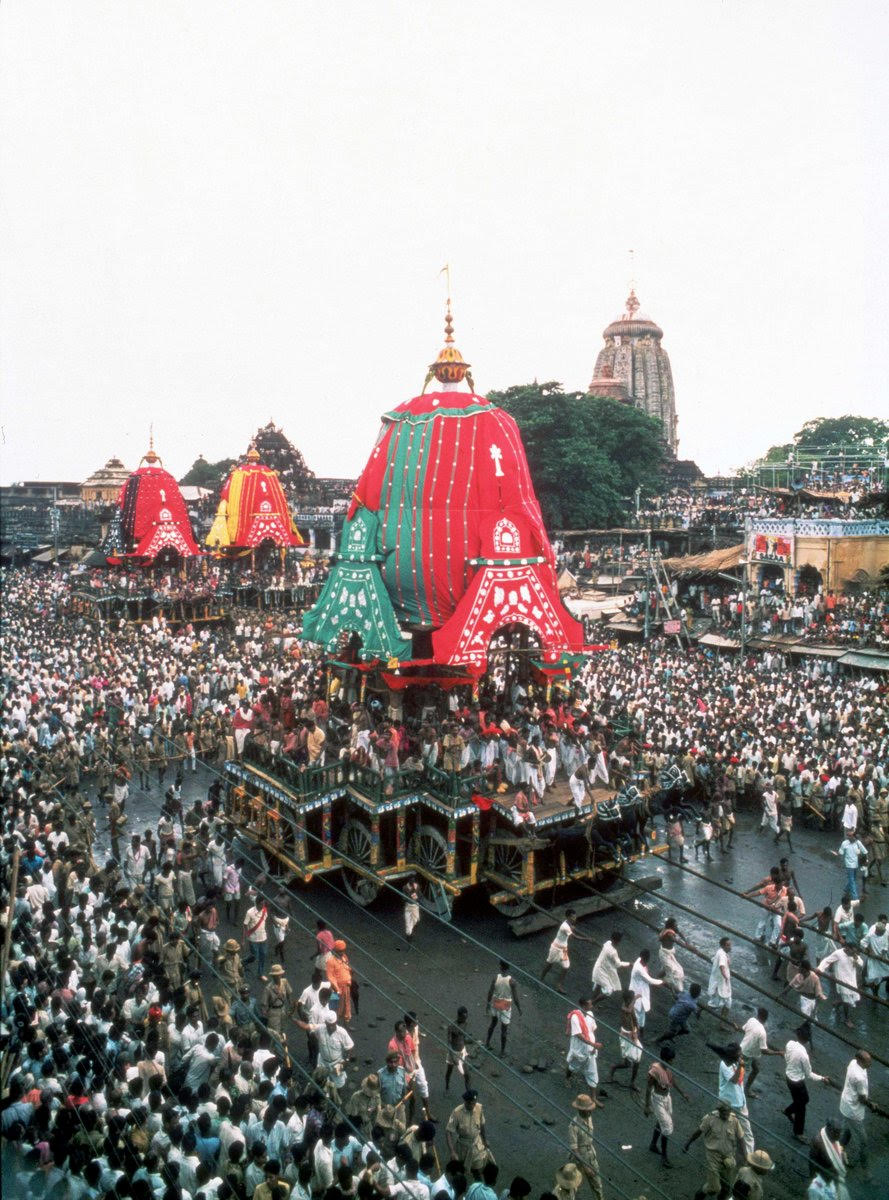
Fig. 3. Puri, the car festival (ratha yatra) and the Jagannath temple, built by Anantavarman Chodaganga in 1135 CE. (Photo Courtesy: Hermann Kulke)
Prof. Sahu (BPS): What were the initial influences that made you shift from Indology to the study of state formation?
HK: In addition to Indology as my major subject (during my PhD), I also studied history and political science as minor subjects. My major interest was always pre-modern history, whether in Germany or in India. Initially, my interest was processes of early medieval state formation in German history which gradually influenced my approach and understanding of comparable processes in early medieval India. Early German history, too, was shaped by independent tribal states such as the Franconian, Saxonian and Bavarian dukedoms. Their continuous struggle for supremacy shaped pre-modern German history in a similar way as it happened in India. Especially revealing and inspiring for me was a comparative analysis of the impact of Christian and Brahmanical ecclesiastical institutions like monasteries, churches or temples on processes of state formation in Indian and German regional kingdoms. The legitimation of political authority through the sponsorship of religious institutions is common to both medieval Germany and India.
My answer to your question is therefore quite clear. I never intended to shift completely from Indology to the historical and socio-political study of state formation in India. While simultaneously studying Indology and history, I gained a lot through the convergence of both subjects and their mutual influences. But I admit frankly that in the course of my studies, state formation in early medieval India gained a momentum of its own. A major fascination for these studies in India, and in Odisha in particular, came from the abundance of sources for tracing the different development stages of state formation.
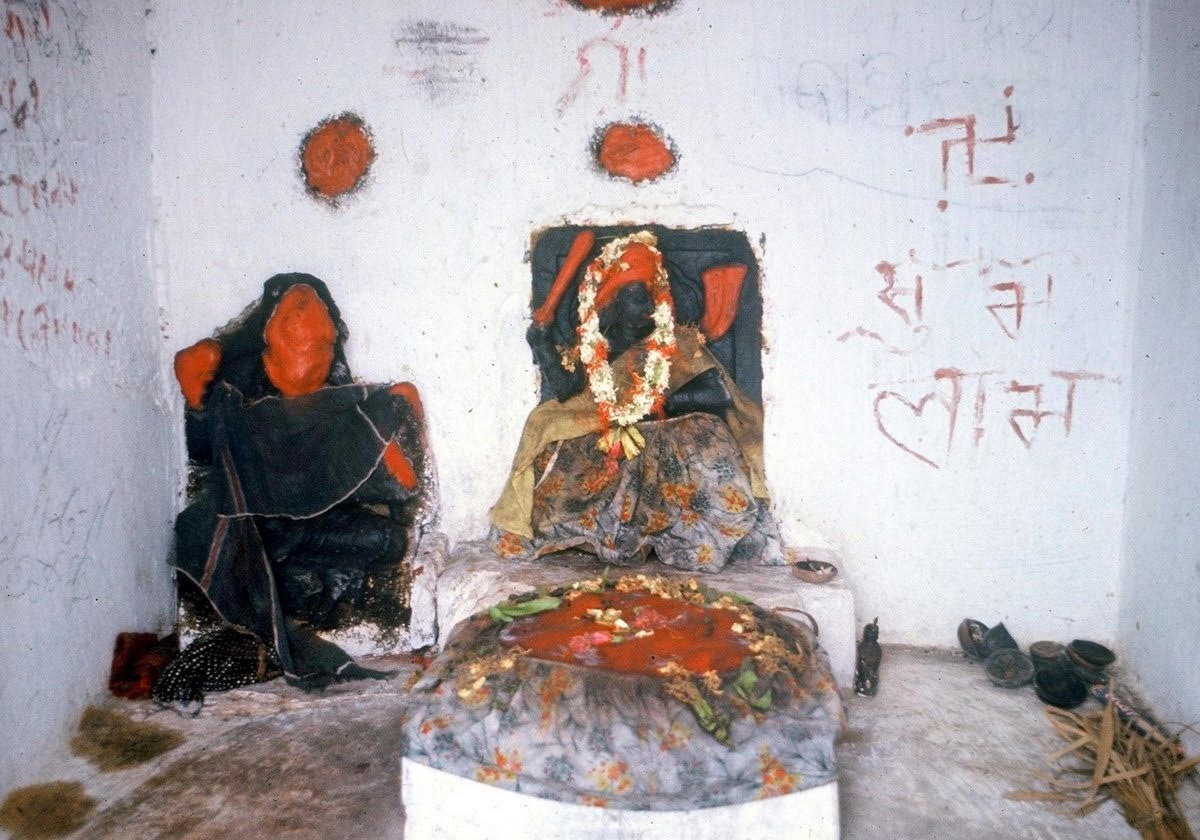
Fig. 4. Ranpur, the flat round stone image of Maninagesvari and two Chamunda images. (Photo Courtesy: Hermann Kulke)
Meenakshi Vashisth (MV): Studies on state formation rely extensively on sources of a certain sort; land grants, state edicts, and temple inscriptions are one dominant category. In your work, what were some of the unorthodox or new sources you were able to explore? What are some potential sources that are still unexplored? Do we need to work with a multiplicity of sources and approaches, so we can do justice to the polyvalence of narratives, while locating them within established power structures?
HK: The sources of my historical studies in India consist, first of all, of epigraphical and literary sources, and documents of art and architecture. But, as has just been demonstrated by the case of the tribal thakuranis of Odisha, our sources in India on early local state formation also include legendary and semi-historical local traditions, and ancient ritual items and artefacts. They are largely subjects of anthropological studies and are rarely noticed by historians. But without a doubt, they are of great historical importance. They allow us to explore elements of earlier stages of state formation, and the changes they went through to cope with new socio-cultural and political situations. The polyvalence of these sources depict not only different stages of state formation, but also processes of development from local and sub-regional chieftaincies to regional, and even imperial, kingdoms.
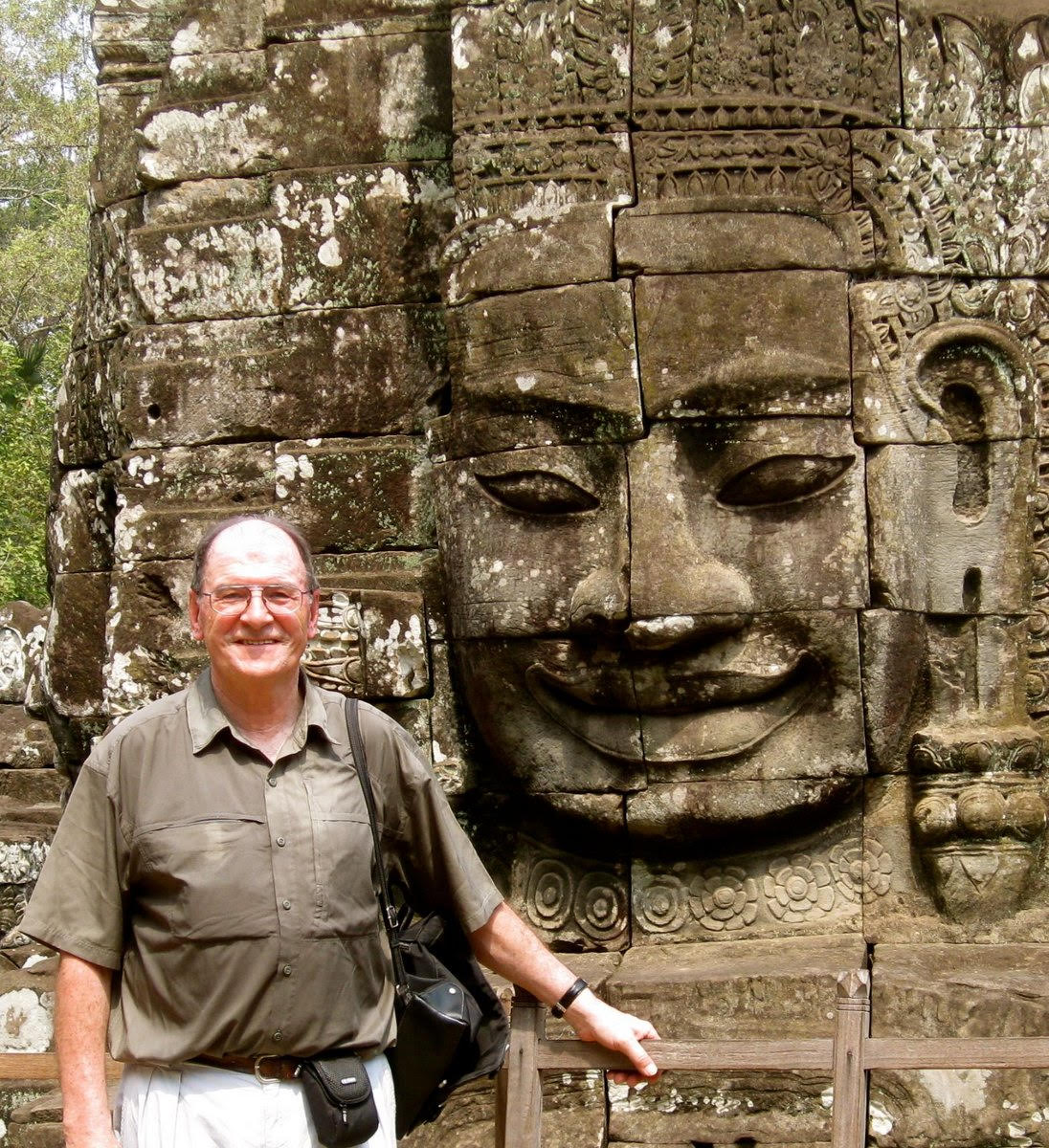
Fig. 5. Hermann Kulke in 2012 at the Bayon temple at Angkor, built in late 12th century. (Photo Courtesy: Hermann Kulke)
BPS: The state-formation model that you have talked about in your works—the integrative model, how is it different from segmentation and fragmentation?
HK: I would first like to begin by pointing out the impetus of R.S. Sharma’s model of Indian feudalism and Burton Stein’s model of the segmentary state on our integrative model of state formation. Sharma doubtlessly deserves credit for providing, for the first time in history, clear evidence of the political and economic relevance of religious donations and institutions in early medieval India. The enduring merit of Stein’s segmentary state model is its emphasis on the political importance of the hitherto-neglected local authorities and their significance in state formation and kingship ideology. But in 1982, in my first critical reflection on both models, I pointed out that they overestimated both the fragmentation and segmentation of pre-modern Indian state formation. According to Sharma and his followers, the myriad of land donations to temples and Brahmins caused not only feudalism but also the fragmentation and weakening of political and economic royal authority. This interpretation undervalues the integrative political and cultural impact of religious institutions on processes of local and regional state formation. Stein undermined the significance of the numerous autonomous and highly developed nuclear areas (nadu) in the river basins of Tamil Nadu as seats of actual political power, and as the central element of the Chola state. In Cholamandala, its central core area, the Cholas indeed exercised uncontested political authority. But it faded off into mere ritual sovereignty in the intermediate and peripheral zones. According to Stein, it was only the overarching ideology of the royal Siva cult which made these units segments of a whole, within a ‘multi-centred system’.
The integrative model, too, attaches importance to donations to Brahmins, religious institutions, and local and sub-regional centres, but not as causes of fragmentation and segmentation. Instead, it emphasises the significance of religious institutions in integrative modes of state formation, and of local and sub-regional centres and their chieftains and ‘little kings’ for regional state formation. The major intention of the processual mode of integrative state formation is not the conceptualisation of ‘The State’. It explores a perceptible shift from the centre to the peripheries, and focuses on local, sub-regional, and regional developments of political, cultural, and socio-economic processes of integration. Instead of conceptualising kingdoms and empires, which is the focus of conventional national historiography and of the concepts of feudalism and the segmentary state, the integrative model emphasizes various processes as causes of state formation.
MV: The periodisation of Indian history has always laboured under the burden of the colonial distinctions between the ancient, medieval, and the modern. How do you think state formations can be used as a lens for reimagining historical periods in Indian history?
HK: Your question requires a supplement. Until fairly recently, Indian history has been burdened not only by its colonial threefold periodisation but also by its, at least partial, continuation by the Indian History Congress. Your question can be positively answered by the definition of early medieval India. It is the merit of Brajadulal Chattopadhyaya to have created and finally established the existence of early medieval India as a distinctly post-classical period between ancient and medieval in his seminal work The Making of Early Medieval India.
In order to verify its existence, he had to not only contradict the tripartite periodisation of Indian history but he also had to detect political, social and cultural processes in the post-Gupta and pre-Delhi Sultanate period that verified fundamental movements at the regional and local levels as a pre-existent pan-Indian social order. Chattopadhyaya’s success of using state formation as a lens for reimagining historical periods of Indian history has been validated even by R.S. Sharma’s recent publication titled Early Medieval Indian Society: A Study in Feudalisation, and by Upinder Singh’s reader Rethinking Early Medieval India. It remains to be seen whether ‘late medieval’ will also be ‘constructed’ as a new separate period, based on different processes of state formation. Various matters of state formation like the gradual convergence of administration and warfare of the Muslim states and of ‘imperial’ Vijayanagara, the Gajapati kingdom and its kinship ideology as well as other significant characteristics of the fourteenth to early sixteenth centuries could justify the ‘construction’ of the ‘late medieval’ period.
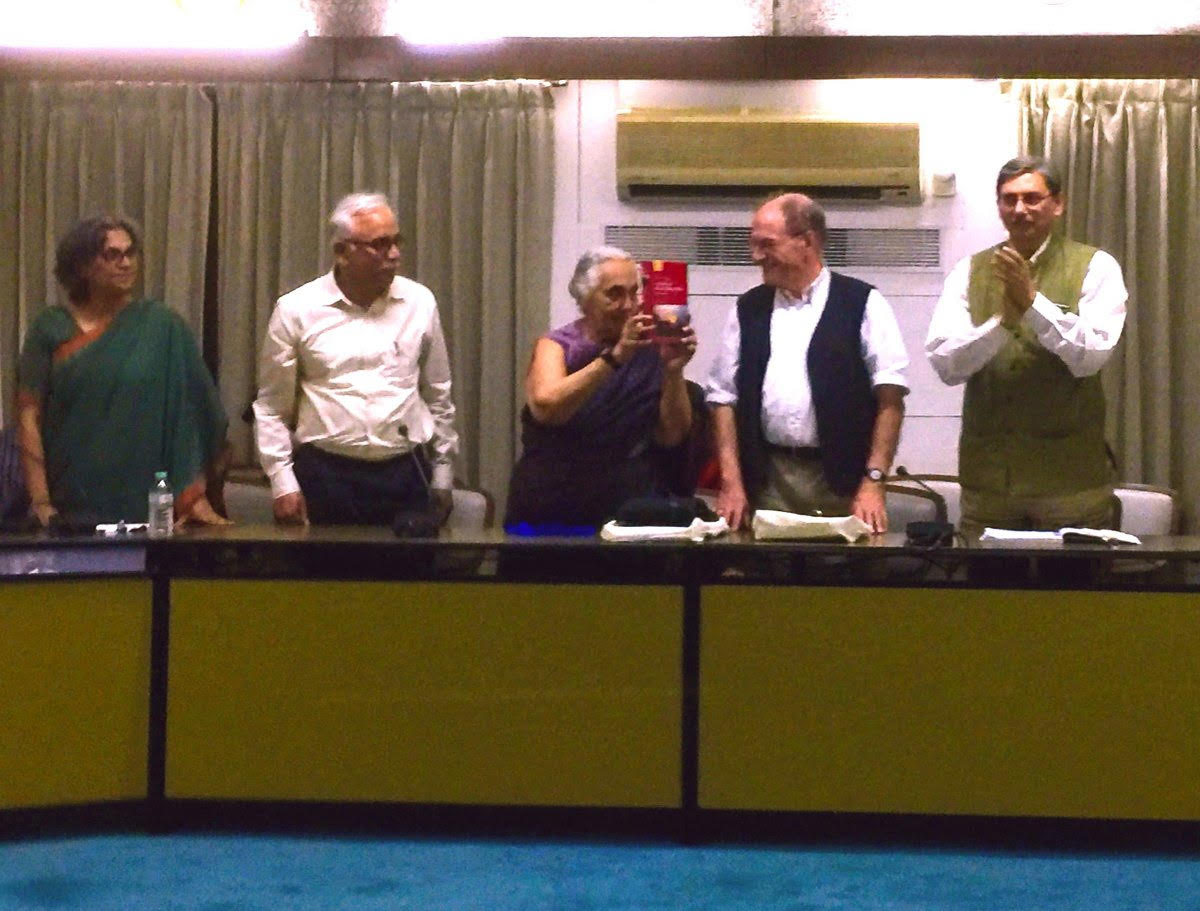
Fig. 6. Release of Kulke Sahu's History of Precolonial India by Prof. Romila Thapar, Prof. Upinder Singh and Prof. Ranabir Chakravarti, Delhi, IIC, March 16th, 2018. (Photo Courtesy: Hermann Kulke)
BPS: You have also worked on Southeast Asia. In what way has your study of Southeast Asia helped you better understand Indian history?
HK: My studies on Southeast Asia, particularly on Indonesia and Cambodia, influenced and enriched my understanding of Indian history in many ways. In the early twentieth century, the famous German sociologist, Max Weber, referred to the important role of inviting north-Indian Brahmins to validate the newly acquired authority of South Indian chieftains and little kings. In 1934, the Dutch scholar van Leur applied this thesis to processes of early Hinduisation and state formation in Java. Referring in detail to van Leur’s Javanese studies, I applied his Javanese concept of legitimation to India, and to Odisha in particular. A detailed analysis of Indonesia’s earliest Sanskrit inscriptions (from the early fifth century) depict a high accordance with eastern and southern India. Once we look at the societies on both sides of the Bay of Bengal in this way, we understand that India’s culture did not reach Southeast Asia by an act of transplantation but through a complicated convergence of processes of state formation from both sides of the Bay of Bengal.
YM: In continuation of that, could you tell us how you would compare the Gajapati kingship of Odisha and the Devaraja kingship of Angkor?
HK: Thank you for this question as it allows me to take up the Devaraja cult of Angkor, the subject of my second Qureshi Memorial Lecture on January 18th. The Devaraja cult centres around a Siva lingam on Phnom Kulen, about 40 km north-east of Angkor. It was founded in 802 CE in a grand ceremony, known as the kamratenjagat ta raja (=devaraja), by an Indian Brahmin who had been invited by King Jayavarman II. A detailed inscription informs us that the Devaraja was consecrated, and ‘that there should be only one single “Lord of the lower earth” (Khmer: kamratenphdaikarom) who would be Universal Lord (cakravartin)’. The Devaraja cult and its interpretation have caused much ink to flow primarily because, according to the rules of Sanskrit grammar, ‘devaraja’ allows two very different interpretations: ‘the king who is the god’ and ‘the king of the gods'. It was particularly George Coedès, the doyen of Angkor historians, who fought vehemently for the first interpretation and, thus, for the deification of Angkor’s kings. He concluded from the evidence that it was safe to say that the kings were the great gods of ancient Cambodia, to whom lingams were dedicated in the temples at Angkor, to idolise their builders as the deified devarajas.
It is fascinating to have a look at the convergence of kingship ideology and monumental temple architecture in Odisha and Angkor during the culmination of their imperial state formation. It has rarely been perceived that their unique monumental temples (the Jagannath Temple and the Sun Temple in Odisha, and Angkor Wat and the Bayon at Angkor) were built contemporaneously in the eleventh and the thirteenth centuries.
After my dissertation on Chidambaram, I was still interested in the kingship ideology of the Cholas and their imperial temple at Thanjavur. I had, therefore, initially planned to write a comparative study of Chola kingship ideology and Angkor’s Devaraja cult as my DLitt thesis. After all, Thanjavur’s truely monumental rajarajesvaralingam stands likewise either for ‘[Siva] the Lord of [king] Rajaraja’ or for ‘Rajaraja, the Lord’, thus deifying Rajaraja. In 1969 and early 1970, I participated therefore in intensive language courses in spoken and classical Khmer (the language spoken in Cambodia) at Yale University and the School of African and Oriental Studies (SOAS) in London. A critical analysis of the relevant Sanskrit and Khmer inscriptions, and more recent studies on the Devaraja cult, confirmed my serious doubts about two key issues of Coedès’ interpretations of the Devaraja cult. These doubts concerned his equation of the divine Devaraja with the ruling kings of Angkor, and the idea that the Devarajas were worshipped through the irrespective personal lingams. These doubts were further confirmed by my studies in Odisha. Although the Gajapati kingship ideology raised the dignity of the rulers considerably and brought them closer to a divine sphere, they were never identified with their istadevatas or kuladevatas.
Another significant ‘discovery’ in Odisha for my studies on Angkor’s Devaraja cult was the calantipratimas—the ‘mobile images’ of stationary deities of temples. I remember very well my first observation of the ratha yatra of the Lingaraja Temple at Bhubaneswar. A beautiful old bronze image of Siva was worshipped on the ratha as the representative of the lingaraja, Siva’s lingam in the temple. Calantipratimas are particularly required for lingams as it is well known that ‘a Sivalinga may not be moved’ (sivalingamnacalayet). Although Bhubaneswar’s lingaraja is certainly not identical to Angkor’s Devaraja cult, their comparison is doubtlessly helpful for our understanding of the latter. On the basis of the ritual necessity of a calantipratima for the Lingaraja cult, I came to the obvious but still conjectural conclusion that the rituals of the fundamentally important Devaraja cult, too, required a calantipratima of its original foundation lingam on far-off Phnom Kulen. However, the bronze image of Siva-Devaraja did not represent Angkor’s ruling kings but Phnom Kulen’s Siva lingam. My ‘discovery’ in Odisha of the ritually significant function of the calantipratima of the central lingam of Siva temples formed an essential argument to refute the deification of Angkor’s kings as Devarajas.
Udayadityavarman II founded the Baphuon, Angkor’s last monumental Siva temple associated with the Devaraja cult, in the second half of the eleventh century. In one of his inscriptions we find a significant depiction of the ideological significance of royal lingams, not only in Angkor but also in India. We are told that he erected the suvarnadri or ‘golden mountain’ (the Baphuon) in his own city, which was comparable to Mount Meru, the abode of the gods. On the summit of this golden mountain he consecrated asuvarnalinga (golden lingam). A victorious general sought Udayadityavarman’s permission to donate his spoils of war to this golden lingam, which harboured in itself the ‘subtle inner self’ (suksma-antara-atman) of Udayadityavarman. Here, we find in a few lines, paradigmatically also for Indian studies, the very essence of the apotheosis of the rulers of Angkor. The ‘subtle inner self’ of the king dwells in a lingam which the king had consecrated as a symbol of his power, during the course of his reign. As the kings of Angkor are often also exalted as a portion (amsa) of Siva, it appears that this ‘portion’ and the ‘subtle inner self’ of the kings are identical. Hence, Siva and the kings of Angkor were united in a lingam upon the topmost step of a temple pyramid. It constituted the ritual centre of the Angkorian kingdom and represented a microcosmic replica of Mount Meru. But despite his ritual merging with Siva, the ruling king of Angkor was neither the Devaraja nor even Siva himself, but anamsa of him. This insight into Angkor’s kingship ideology influenced my DLitt in 1975. However, it was not, as initially planned, a comparative study on Chola kingship ideology and Angkor’s Devaraja cult, but dedicated to the cult of Jagannath and Gajapati kingship.
Notes
[i] Schnepel, The Jungle Kings, 255.
Bibliography
Chattopadhyaya, B.D. The Making of Early Medieval India. New Delhi: Oxford University Press, 2012. First published in 1994.
Eschmann, Anncharlott, Hermann Kulke, and Gaya Charan Tripathi, eds. The Cult of Jagannath and the Regional Tradition of Orissa. New Delhi: Manohar Publishers and Distributors, 2014. First published in 1978.
Kulke, Hermann. ‘Cidambaramāhātmya: A critical examination of the priestly traditions of a South Indian temple city with regard to its religious and historical development.’ PhD thesis, Freiburg University, 1967.
Kulke, Hermann. ‘Jagannatha Cult and Gajapati-Kingship. A Contribution to the History of Religious Legitimation of Hindu Rulers.’ DLitt thesis, Heidelberg University, 1975.
Kulke, Hermann. History of Precolonial India: Issues and Debates. Edited by Bhairabi Prasad Sahu. Translated by Parnal Chirmuley. New Delhi: Oxford University Press, 2018.
Kulke, Hermann. The State in India, 1000–1700. New Delhi: Oxford University Press, 1995.
Kulke, Hermann. ‘Imperial Temple Architecture and Ideology of Kingship in Odisha: Tanjavur’s Brihadisvara Temple as the Model for Odisha’s Monumental Temples?’ In Questioning Paradigms Constructing Histories. A Festschrift for Romila Thapar, edited by Kumkum Roy and Naina Dayal, 87–108. New Delhi: Aleph Book Company, 2018.
Kulke, Hermann. ‘The Devaraja Cult.’ In Kings and Cults: State Formation and Legitimation in India and Southeast Asia, 327–382. New Delhi: Manohar Publishers and Distributors, 1993.
Kulke, Hermann and Dietmar Rothermund. A History of India, 6th ed. London: Routledge, 2016.
Kulke, Hermann and Georg Berkemer, eds. Centres out There?: Facets of Subregional Identities in Orissa. New Delhi: Manohar Publishers and Distributors, 2011.
Sahu, Bhairabi Prasad and Hermann Kulke, eds. Interrogating Political Systems: Integrative Processes and States in Pre-modern India. New Delhi: Manohar Publishers and Distributors, 2015.
Schnepel, Burkhard. The Jungle Kings: Ethnohistorical Aspects of Politics and Ritual in Orissa. Vol. 2 of Studies in Orissan Society, Culture, and History. New Delhi: Manohar Publishers and Distributors, 2002.











